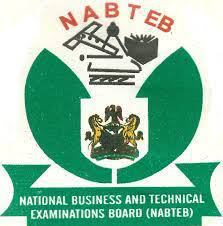JAMB Economics Syllabus For 2024/2025 Jamb CBT
JAMB ECONOMICS SYLLABUS FOR 2024/2025 JAMB CBT
Jamb Economics Syllabus for 2024 Exam, The aim of the Unified Tertiary Matriculation Examination (UTME) syllabus in Economics is to prepare the candidates for the Board’s examination. It is designed to test their achievement of the course objectives, which are to:Jamb Economics Syllabus Contents.
1. demonstrate sufficient knowledge and understanding of the basic concepts, tolls and their general applications to economic analysis; 2. identify and explain the basic structure, operations and roles of the various economics units and institutions (national and international); 3. describe major economic activities–production, distribution and consumption; 4. identify and appraise the basic economic problems of society; 5. develop the competence to proffer solutions to economic problems. 1. Economics as a science a. Basic Concepts: Wants, Scarcity, choice, opportunity cost, Rationality, production, distribution, consumption etc b. Economic problems of: what, how and for whom to produce 2. Economic Systems a. Types: free enterprise, centrally planned and mixed economies b. Solutions to economic problems under different systems c. Contemporary issues in economic systems (e.g. economic reforms, deregulation etc) Candidates should be able to: (i) compare various concepts in economics and their applications; (ii) interpret graphs/schedules in relation to the concepts; (iii) identify economic problems; (iv) proffer solutions to economic problems Candidates should be able to: (i) compare the various economic systems; (ii) apply the knowledge of economic systems to contemporary issues in Nigeria; (iii) proffer solutions to economic problems in different economic systems. 3. Methods of Economic Analysis a. Scientific Approach: i. inductive and deductive methods ii. positive and normative reasoning b. Basic Tools i. tables, charts and graphs ii. measures of central tendency: mean, median and mode, and their applications. iii. measures of dispersion; variance, standard deviation, range and their applications; iv. merits and demerits of the tools. 4. The Theory of Demand a. i. meaning and determinants of demand ii. demand schedules and curves iii. the distinction between change in quantity demanded and change in demand. b. Types of demand: Composite, derived, competitive etc c. Elasticity of demand: determinants, measurements, nature and applications (e.g. revenue). d. Effects of changes in the determinants (price, income and cross elasticities). 5. The Theory of Consumer Behaviour a. Basic Concepts: i. utility (cardinal, ordinal and marginal utilities) ii. value in use and value in exchange iii. indifference curve and budget line. Candidates should be able to: (i) distinguish between the various forms of reasoning; (ii) apply these forms of reasoning to real life situations; (iii) use the tools to interpret economic data; (iv) analyse economic data using the tools; (v) assess the merits and demerits of the tools. Candidates should be able to: (i) identify the factors determining demand; (ii) interpret demand curves from demand schedules; (iii) differentiate between change in quantity demanded and in demand; (iv) compare the various types of demand and their interrelationships; (v) relate the determinants to the nature of elasticity; (vi) compute elasticities; (vii) interpret elasticity coefficients in relation to real life situations. Candidates should be able to: (i) appraise the various utility concepts; Jamb Economics Syllabus (ii) apply the law of demand using the marginal utility analysis; (iii) use indifference curve and marginal analyses to determine consumer equilibrium; b. Diminishing marginal utility and the law of demand. c. Consumer equilibrium using the indifference curve and marginal analyses. d. Effects of shift in the budget line and the indifference curve. e. Consumer surplus and its applications. 6. The Theory of Supply a. i. Meaning and determinants of supply ii. Supply schedules and supply curves iii. the distinction between change in quantity supplied and change in supply b. Types of Supply: Joint/complementary, competitive and composite c. Elasticity of Supply: determinants, measurements, nature and applications 7. The Theory of Price Determination a. The concepts of market and price b. Functions of the price system c. i. Price determination under a free market ii. Price legislation and its effects d. The effects of changes in supply and demand on equilibrium price and quantity (iv) associate the income and substitution effects; (v) apply consumer surplus to real life situations. Candidates should be able to: (i) identify the factors determining supply; (ii) interpret supply curves from supply schedules; (iii) differentiate between change in quantity supplied and change in supply; (iv) compare the various types of supply and their interrelationships; (v) relate the determinants to the nature of elasticity; (vi) compute elasticity coefficients; (vii) interpret the coefficients in relation to real live situations. Candidates should be able to: (i) express the concepts of market and price; (ii) examine the functions of the price system; (iii) evaluate the effects of government interference with the price system; (iv) differentiate between minimum and maximum price legislation; (v) interpret the effects of changes in supply and demand on equilibrium price and quantity. 8. The Theory of Production a. Concepts of production and their interrelationships (TP, AP, MP and the law of variable proportion). b. Scale of Production: Internal and external economies of scale and their implications. c. Production functions and returns to scale d. Producers’equilibrium isoquant-isocost and marginal analyses. 9. Theory of Costs a. The concepts of cost: Fixed, Variable Average and Marginal b. Accountants’and Economists’notions of cost c. Short-run and long-run costs d. The marginal cost and the supply curve of firm. 10. Market Structure a. Perfectly competitive market: i. Assumptions and characteristics; ii. Short-run and long-run equilibrium of a perfect competitor; b. Imperfect Market: i. Pure monopoly, discriminatory monopoly and monopolistic competition. ii. Short-run and long-run equilibrium positions. c. Break-even/shut-down analysis in the various markets. 11. National Income a. Concepts: GNP, GDP, NI etc b. National Income measurements and their problems. That is all on Jamb Economics Syllabus for 2024/2025 JAMB CBT EXAM.Categories: Jamb Syllabus | Past Questions
0 Responses




